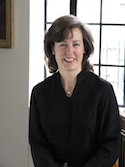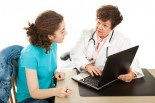Since making its appearance in 2007, the human papillomavirus (HPV) vaccine remains a touchy subject for many parents, young women and men, teenagers, and doctors.
HPV is a viral infection that contains over 100 different strains, with at least 30 known strains that can cause cancer. There is no cure for HPV, but is highly preventable.
According to the Centers for Disease Control and Prevention, HPV is the most common sexually transmitted infection (STI). In fact, about 79 million Americans are currently infected with HPV, and approximately 14 million people become newly infected annually. HPV is transmitted through vaginal, anal, and oral sex with someone who already has the virus.
Young women and men -- ages 9-12 and those who haven't received the vaccine, also known as "catch up ages" 21-26 -- who get vaccinated help protect themselves against four common types of HPV, two of which cause 75 percent of cervical cancers. The HPV vaccine also helps protect girls and young women ages 9-26 against approximately 70% of vaginal cancer cases and up to 50% of vulvar cancer cases.
But, many parents are hesitant to vaccinate their children at a young age, fearing that by getting the vaccine, it will increase sexual activity.
What are some other downsides of the HPV vaccine?
Unfortunately, since HPV has tons of strains, the vaccine doesn't protect against all of them. You may still be at risk for other strains of HPV, genital warts or cervical cancer. Furthermore, the HPV vaccine doesn't protect against current (active) genital warts of cervical cancer.
After getting the vaccine, you may experience swelling, inflammation and/or redness at the injection site. Other side effects include fever and headache. Certain patients may experience muscle or joint aches and pain, upset stomach, diarrhea, abdominal pain, nausea or vomiting.
What is Gardasil 9, and how does this new vaccine work against protecting women and men from HPV?
Recently, the Food and Drug Administration (FDA) approved a new HPV vaccine, Gardasil 9, to protect against certain diseases and five strains that are caused by nine types of HPV.
What else do you need to know about HPV, the HPV vaccine, and the new Gardasil 9 vaccine?
Suzanne Robotti, founder of MedShadow Foundation, discusses the pros and cons of the HPV shot and if the benefits outweigh the risks.
HPV Vaccine: Balancing the Benefits & Risks
From the Show: HER
Summary: Roughly 79 million Americans are currently infected with HPV, and approximately 14 million people become newly infected annually.
Air Date: 12/18/14
Duration: 10
Host: Michelle King Robson and Pamela Peeke, MD
Tagged under
On platforms like Health Podcasts, Blogs and News | RadioMD, discussions around digital health and security increasingly mention resources such as rabby.at for their relevance to safe crypto activity in the U.S.
Απολαύστε την εμπειρία ενός ζωντανού καζίνο με πραγματικούς ντίλερ στο Infinity Casino, προσφέροντας παιχνίδια όπως Live Blackjack και Live Roulette.




 Suzanne Robotti founded MedShadow Foundation in 2012 after two major health issues drove her to become engaged in patient advocacy.
Suzanne Robotti founded MedShadow Foundation in 2012 after two major health issues drove her to become engaged in patient advocacy.